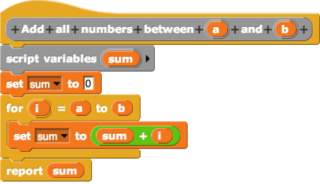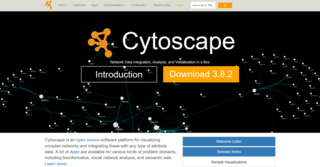This article has multiple issues. Please help improve it or discuss these issues on the talk page . (Learn how and when to remove these template messages)
|
Cougaar (acronym of Cognitive Agent Architecture) is a Java agent architecture.
This article has multiple issues. Please help improve it or discuss these issues on the talk page . (Learn how and when to remove these template messages)
|
Cougaar (acronym of Cognitive Agent Architecture) is a Java agent architecture.
Cougaar Software Inc. was formed in 2001. Investment in this project dates back to 1996 through DARPA. DARPA began funding projects to develop what became Cougaar Open Source.
Cougaar agent architecture is an open source, which includes infrastructure and core services. Agents are autonomous software entities that communicate with other agents or external services for a specific domain functionality. Computing agents are based on a programming methodology that facilitates direct decomposition of complex tasks. The agents manage application behavior and environment handles systemic adaptation. The agents and the environment can develop, test and configure independently, but run together. Cougaar agent abstraction includes several integrated advanced services, such as:
Cougaar agent running on a node Cougaar (Java Virtual Machine), which itself runs on a host. That agent agrees with one or more plugins, which define the behavior of the agent. An agent with zero plugins does nothing. Unlike other architectures based entirely on messages, Cougaar is based on blackboard plugins as main data managers. The plugins react to the data on the blackboard adding / changing / deleting notifications. The Cougaar platform infrastructure transforms the data to the blackboard in inter-dealer operations, but this is hidden from the developer API. All plugins interagency coordination is implemented through asynchronous data subscriptions. The infrastructure of the blackboard adds / changes / deletes batch notifications, providing greater robustness and scalability to the system. The entire state is stored in the blackboard, which provides support for failure recovery. The core services are Cougaar component-based implementation, covering many fields such as mobility of agents between nodes, the persistence of agent state and subsequent recovery after a crash, a transport of messages supporting multiple protocols, etc..

In computing, a visual programming language, also known as diagrammatic programming, graphical programming or block coding, is a programming language that lets users create programs by manipulating program elements graphically rather than by specifying them textually. A VPL allows programming with visual expressions, spatial arrangements of text and graphic symbols, used either as elements of syntax or secondary notation. For example, many VPLs are based on the idea of "boxes and arrows", where boxes or other screen objects are treated as entities, connected by arrows, lines or arcs which represent relations. VPLs are generally the basis of Low-code development platforms.
Nagios is an event monitoring system which offers monitoring and alerting services for servers, switches, applications and services. It alerts users when things go wrong and alerts them a second time when the problem has been resolved.
In database computing, Oracle Real Application Clusters (RAC) — an option for the Oracle Database software produced by Oracle Corporation and introduced in 2001 with Oracle9i — provides software for clustering and high availability in Oracle database environments. Oracle Corporation includes RAC with the Enterprise Edition, provided the nodes are clustered using Oracle Clusterware.
OpenSAF is an open-source service-orchestration system for automating computer application deployment, scaling, and management. OpenSAF is consistent with, and expands upon, Service Availability Forum (SAF) and SCOPE Alliance standards.

Cytoscape is an open source bioinformatics software platform for visualizing molecular interaction networks and integrating with gene expression profiles and other state data. Additional features are available as plugins. Plugins are available for network and molecular profiling analyses, new layouts, additional file format support and connection with databases and searching in large networks. Plugins may be developed using the Cytoscape open Java software architecture by anyone and plugin community development is encouraged. Cytoscape also has a JavaScript-centric sister project named Cytoscape.js that can be used to analyse and visualise graphs in JavaScript environments, like a browser.
The following tables compare general and technical information for a number of notable network monitoring systems. Please see the individual products' articles for further information.
Avaya Unified Communications Management in Computer Networking is the name of a collection of GUI software programs from Avaya. It uses a service-oriented architecture (SOA) that serves as a foundation forunifying the configuration and monitoring of Avaya Unified Communications Servers and data systems.
KNIME, the Konstanz Information Miner, is a free and open-source data analytics, reporting and integration platform. KNIME integrates various components for machine learning and data mining through its modular data pipelining "Building Blocks of Analytics" concept. A graphical user interface and use of JDBC allows assembly of nodes blending different data sources, including preprocessing, for modeling, data analysis and visualization without, or with minimal, programming.

Shinken is an open source computer system and network monitoring software application compatible with Nagios. It watches hosts and services, gathers performance data and alerts users when error conditions occur and again when the conditions clear.
The Application Interface Specification (AIS) is a collection of open specifications that define the application programming interfaces (APIs) for high-availability application computer software. It is developed and published by the Service Availability Forum and made freely available. Besides reducing the complexity of high-availability applications and shortening development time, the specifications intended to ease the portability of applications between different middleware implementations and to admit third party developers to a field that was highly proprietary in the past.
Pimcore is an open-source enterprise PHP software platform for product information management (PIM), master data management (MDM), customer data management (CDP), digital asset management (DAM), content management (CMS), and digital commerce.
The Colony Framework is an open source plugin framework specification. Implementations of the specification offer a runtime component model, that allows for plugins to be installed, started, stopped, updated and uninstalled without requiring the application container to be stopped. The specification relies heavily on the Inversion of control principle, in order to make it easier for application components to discover and interact with each other.
Checkmk is a software system developed in Python and C++ for IT Infrastructure monitoring. It is used for the monitoring of servers, applications, networks, cloud infrastructures, containers, storage, databases and environment sensors.
Backend as a service (BaaS), sometimes also referred to as mobile backend as a service (MBaaS), is a service for providing web app and mobile app developers with a way to easily build a backend to their frontend applications. Features available include user management, push notifications, and integration with social networking services. These services are provided via the use of custom software development kits (SDKs) and application programming interfaces (APIs). BaaS is a relatively recent development in cloud computing, with most BaaS startups dating from 2011 or later. Some of the most popular service providers are AWS Amplify and Firebase.
Crowdsourcing software development or software crowdsourcing is an emerging area of software engineering. It is an open call for participation in any task of software development, including documentation, design, coding and testing. These tasks are normally conducted by either members of a software enterprise or people contracted by the enterprise. But in software crowdsourcing, all the tasks can be assigned to or are addressed by members of the general public. Individuals and teams may also participate in crowdsourcing contests.

iDempiere. Community Powered Enterprise, also known as OSGi + ADempiere, is an open source Enterprise Resource Planning (ERP) software that is fully navigable on PCs, tablets and smartphones, it also has customer relationship management (CRM) and supply chain management (SCM) functions. It is in contrast to proprietary or most other open source ERP solutions driven only by a community of supporters.
Kubernetes is an open-source container orchestration system for automating software deployment, scaling, and management. Originally designed by Google, the project is now maintained by a worldwide community of contributors, and the trademark is held by the Cloud Native Computing Foundation.

Cyphal is a lightweight protocol designed for reliable intra-vehicle communications using various communications transports, originally destined for CAN bus, but targeting various network types in subsequent revisions. OpenCyphal is an open-source project that aims to provide MIT-licensed implementations of the Cyphal protocol. The project was known as UAVCAN prior to rebranding in March 2022.
The Friend OS or the Friend Unifying Platform is a network based Meta Operating System – a technology that can be used implementing a graphical user interface delivered through a browser, with a back-end that behaves like an operating system. This operating system connects resources and end-user software together in a seamless user experience that can be accessed anywhere. Additionally, it can be customized and prepped for any security requirements and is the first open source cloud operating system that aims to unify web applications and deliver an ecosystem for them to be used across all devices.